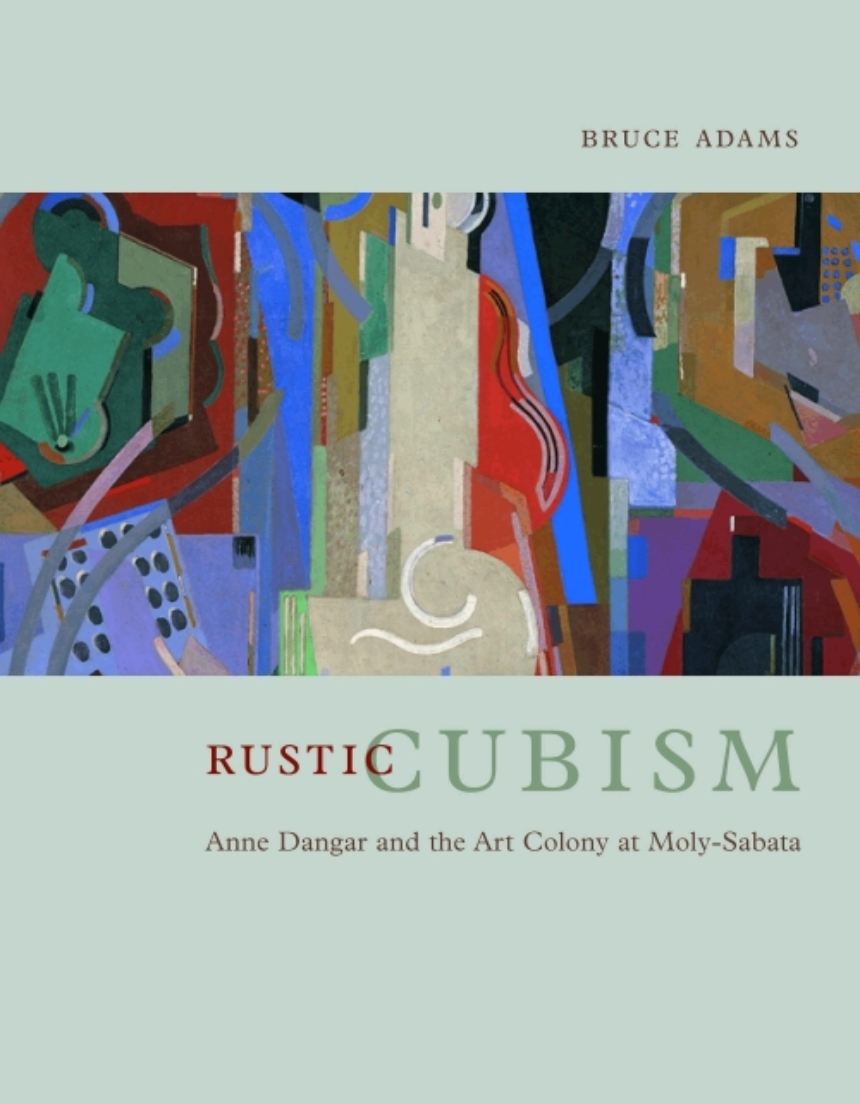Rustic Cubism
Anne Dangar and the Art Colony at Moly-Sabata
In Rustic Cubism, Bruce Adams tells the fascinating story of Moly-Sabata, an art colony founded in the Rhône Valley during the height of French modernism by Cubist pioneer Albert Gleizes. Following his social and spiritual agenda of earthly labor and a Celtic-medievalist view of Christianity, Gleizes’ disciples worked to fuse Cubism with a revival of ancient agrarian, artisanal traditions. The most important and committed member of this experimental commune was ceramicist Anne Dangar (1885-1951).
In part a gripping biography of this Australian expatriate, Rustic Cubism chronicles Dangar’s personal battles and the tumult of the World War II era during her tempestuous tenure at Moly-Sabata. Dangar dedicated herself to the colony’s aims by working in the region’s village potteries, combining their vernacular elements with Gleizes’ design methods to arrive at a type of rustic Cubism. Her work there would ultimately be rewarded; her pieces can today be found in the Musée des Arts Décoratifs in Paris, the Musée d’Art Moderne de la Ville de Paris, the Museo Internazionale delle Ceramiche in Faenza, the National Gallery of Australia, Canberra, and many other museums.
Rustic Cubism places Dangar at the heart of Moly-Sabata’s alternative art movement—one that, in its nostalgic present, attempted to construct a culture based on the distant past. Generously illustrated with photographs of the art and social milieu of the period, this captivating and original narrative makes a considerable contribution to our understanding of French modernism and early twentieth-century cultural politics as well as of the life of a most talented and intriguing female artist.
In part a gripping biography of this Australian expatriate, Rustic Cubism chronicles Dangar’s personal battles and the tumult of the World War II era during her tempestuous tenure at Moly-Sabata. Dangar dedicated herself to the colony’s aims by working in the region’s village potteries, combining their vernacular elements with Gleizes’ design methods to arrive at a type of rustic Cubism. Her work there would ultimately be rewarded; her pieces can today be found in the Musée des Arts Décoratifs in Paris, the Musée d’Art Moderne de la Ville de Paris, the Museo Internazionale delle Ceramiche in Faenza, the National Gallery of Australia, Canberra, and many other museums.
Rustic Cubism places Dangar at the heart of Moly-Sabata’s alternative art movement—one that, in its nostalgic present, attempted to construct a culture based on the distant past. Generously illustrated with photographs of the art and social milieu of the period, this captivating and original narrative makes a considerable contribution to our understanding of French modernism and early twentieth-century cultural politics as well as of the life of a most talented and intriguing female artist.
272 pages | 150 halftones, 24 color plates | 8 1/2 x 11 | © 2004
Reviews
Table of Contents
List of Illustrations
Acknowledgments
Note on Sources
Abbreviations
Introduction: The Potter’s Story
Part One: Beginnings
1. Anne Dangar’s Formative Years in Sydney and Paris
2. The Generative Influences upon Albert Gleizes’ Plans for Moly-Sabata
3. The Foundation and Early Years of Moly-Sabata
Part Two: Growth
4. The Spiral & the Circle: Lessons on Spirituality, Form and Place
5. The Life of a Village Potter
6. Politics and Folklore in the 1930s
Part Three: Transformation
7. Morocco and the Outbreak of War
8. Conflict and Collaboration: The War Years at Moly-Sabata
Part Four: Renewal
9. Postwar Populism: Anne Dangar’s "Return to France"
10. Cubism and Religion
11. Catholicism and Identity: Anne Dangar’s Last Years
Epilogue
Notes
Bibliography
Acknowledgments
Note on Sources
Abbreviations
Introduction: The Potter’s Story
Part One: Beginnings
1. Anne Dangar’s Formative Years in Sydney and Paris
2. The Generative Influences upon Albert Gleizes’ Plans for Moly-Sabata
3. The Foundation and Early Years of Moly-Sabata
Part Two: Growth
4. The Spiral & the Circle: Lessons on Spirituality, Form and Place
5. The Life of a Village Potter
6. Politics and Folklore in the 1930s
Part Three: Transformation
7. Morocco and the Outbreak of War
8. Conflict and Collaboration: The War Years at Moly-Sabata
Part Four: Renewal
9. Postwar Populism: Anne Dangar’s "Return to France"
10. Cubism and Religion
11. Catholicism and Identity: Anne Dangar’s Last Years
Epilogue
Notes
Bibliography
Awards
New South Wales Ministry for the Arts: New South Wales Premier's History Awards
Shortlist
